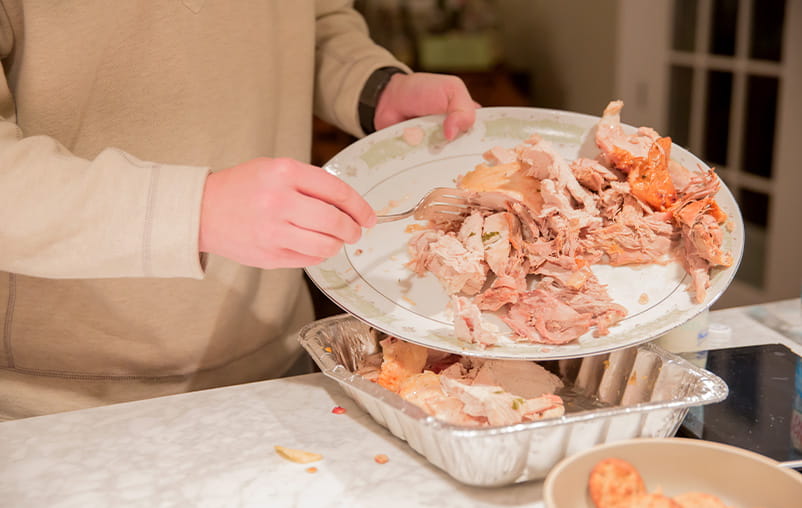Did you know certified child passenger safety technicians at University Health can check that your child's car seat is properly installed? This helps avoid injury in the event of a car crash.
Free Car Seat Inspection
Certified Child Passenger Safety Technicians will check that your child's car seat is properly installed at Seat Check Saturday on Sept. 21. This free event is open to the public.
When parents leave the Women's & Children's Hospital with their newborn baby, Injury Prevention staff can provide information on how to correctly secure the infant in a rear-facing car seat. Parents can also call the University Health Injury Prevention team at 210-358-4295 with questions about car seats and booster seats.
The American Academy of Pediatrics recommends that infants and toddlers ride rear-facing in a car seat until they are at least 2 years old.
But as children outgrow their infant seats, or additional kids are added to the family vehicle, parents may not know how to adjust and provide the greatest amount of protection.
Medical teams in our Level I pediatric trauma center see the results far too often. We treat children with traumatic head injuries, internal organ damage and other life-threatening wounds.
Common Car Seat Mistakes
“Parents need current and accurate information to keep their children safe in a crash, but they don’t always find that from traditional sources,” said Jennifer Northway, director of Injury Prevention at University Health.
These are some of the most common car seat mistakes parents make:
- Washing the harness straps when they get dirty
- Passing car seats from child to child
- Not checking that all parts of the car seat are there and in working order
- Buying a one-size-fits-all car seat
Northway says parents too often listen to relatives and friends who offer inaccurate information. They may unintentionally endanger children by passing car seats from child to child, not realizing the seats are missing parts or are no longer safe to use.
Did You Know? Replace Dirty Harness Straps — Don't Wash Them
One common mistake parents make is washing the seat’s harness straps when they get dirty.
“Putting the harness in a washing machine or cleaning with detergent, disinfectants or bleach could damage the harness’ ability to hold up in a crash,” Northway said. Parents can buy a replacement harness or straps if the original ones become too dirty.
Northway also warns against buying a seat that is advertised as the only seat you’ll ever need. The all-in-one seats often don’t properly fit smaller infants or bigger children.
When to Change your Child’s Car Seat
When to make a change depends on a number of factors. The National Highway Transportation Safety Administration recommends these guidelines:
- Follow the car seat manufacturer’s instructions and select a seat based on your child’s height and weight.
- Choose a seat that fits in your vehicle and use it every time.
- Read the vehicle owner’s manual on how to install the car seat using the seat belt or lower anchors and a tether, if available.
- Keep your child in the back seat at least through age 12.
Northway says education and caregiver support are key to reducing the unacceptable number of injuries to children not properly buckled up.
Car Seats Are the Law for Good Reason
National and state laws requiring children be restrained in car seats have been around for decades. Texas requires that all children younger than 8 years old be secured in child safety or booster seats.
Still, many parents don’t use car seats, or they use them incorrectly. The National Highway Traffic Safety Administration, known as NHTSA, reports that throughout the United States in 2022, 39% of children who died in crashes were unrestrained.
Experts Can Ensure Proper Car Seat Use
“A certified car seat technician can help you determine the right seat,” Northway said.
Certification requires 40 hours of instruction. Child passenger safety technicians, as they’re formally called, receive hands-on training on how to install seats in various vehicles. They’re taught harnessing procedures and receive continuing education to stay on top of new technologies and the latest seats being marketed.
Last year, University Health's certified technicians held over 450 events aimed at teaching the community about proper car seat use and installation. They educated over 1,800 people and distributed more than 1,000 seats to families in need.
Parents and caregivers taking the classes learned that as children grow, they can move from a rear-facing car seat to a forward-facing car seat, to using a booster seat, to finally using an adult lap and shoulder belt. The longer they can keep a child in each restraint the safer the child will be. Use this guide to determine which car seat is right for your child.
Seat Check Saturday with University Health
Get a free car seat safety inspection by Certified Child Passenger Safety Technicians on Saturday, Sept. 21. Find more details online.
Parents can call the University Health Injury Prevention team at 210-358-4295 with questions about car seats and booster seats.
Learn more about car seat safety and other injury prevention initiatives at University Health in San Antonio. Plus, watch this SA Live segment about car seat safety.





